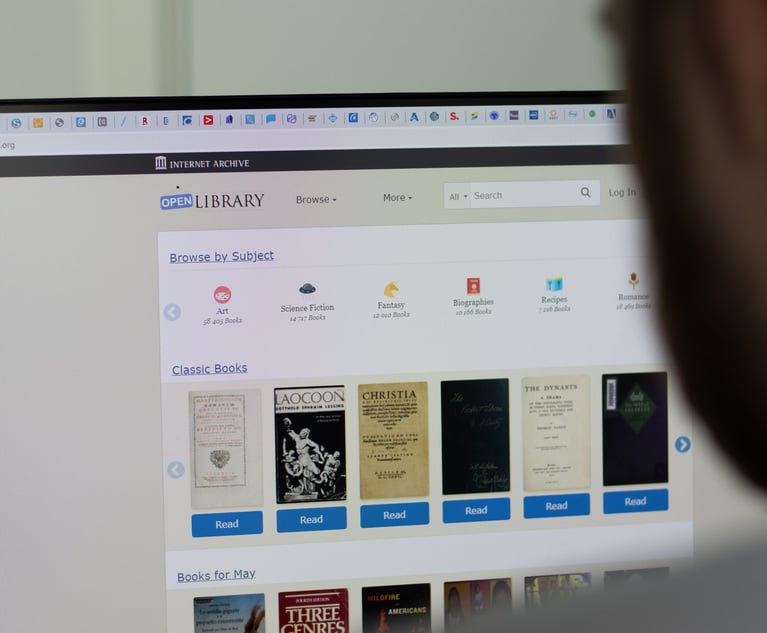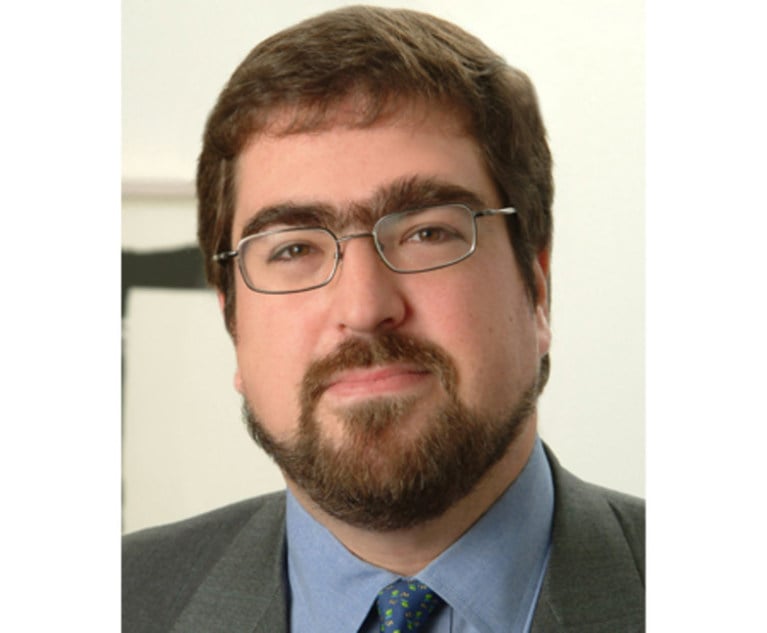The Turtles Speed Toward Performance Payments for Pre-1972 Recordings
In their Entertainment Law column, Michael I. Rudell and Neil J. Rosini write: In denying a motion by defendant Sirius XM Radio for summary judgment in a suit over its transmitting of pre-1972 sound recordings, Southern District Judge Colleen McMahon's decision upends settled expectations of who must pay for what in the broadcast music industry.
January 22, 2015 at 08:06 PM
12 minute read
From a copyright perspective, there are two types of sound recordings1 in the United States: those made on or after Feb. 15, 1972, and those made before (which for convenience, we'll call “pre-1972 sound recordings.”) On Feb. 15, 1972, new sound recordings first came within the scope of U.S. Copyright Act protection while earlier recordings did not. For example, the Beach Boys' recording of “Barbara Ann” made in 1965 cannot be protected by federal copyright against pirate copies, unlike their recording of “Wontcha Come Out Tonight” made in 1977.
But when Congress decided to protect sound recordings made on or after Feb. 15, 1972, against unauthorized reproduction under the Copyright Act, it did not see fit to afford their owners an exclusive right of public performance, which among other benefits would have generated fees from radio transmissions. This gap was partially closed in 1995 when a limited public performance right for sound recordings was added, but it only applies to digital broadcasts as distinguished from analog. To this day, neither federal law nor state law requires any payment for analog transmissions of sound recordings that were created on or after Feb. 15, 1972.
Pre-1972 sound recordings, on the other hand, exist without federal copyright protection and accordingly are not subject to Copyright Act provisions that apply to sound recordings made later, such as the compulsory license for some digital transmissions, mechanisms for authors and successors to terminate grants of rights, and the duration of copyright protection.2 Instead, the rules that govern pre-1972 sound recordings come from a patchwork of state statutes and common law that can vary from one state to another and the omission of a public performance right for sound recordings with federal copyright protection doesn't affect them.
This content has been archived. It is available through our partners, LexisNexis® and Bloomberg Law.
To view this content, please continue to their sites.
Not a Lexis Subscriber?
Subscribe Now
Not a Bloomberg Law Subscriber?
Subscribe Now
NOT FOR REPRINT
© 2024 ALM Global, LLC, All Rights Reserved. Request academic re-use from www.copyright.com. All other uses, submit a request to [email protected]. For more information visit Asset & Logo Licensing.
You Might Like
View All

Not All Secrets Are Trade Secrets: SDNY Examines the Limits of NDA Protection
13 minute read
'Rampant Piracy': US Record Labels File Copyright Suit Against French Distributor Believe
5 minute readTrending Stories
Who Got The Work
Michael G. Bongiorno, Andrew Scott Dulberg and Elizabeth E. Driscoll from Wilmer Cutler Pickering Hale and Dorr have stepped in to represent Symbotic Inc., an A.I.-enabled technology platform that focuses on increasing supply chain efficiency, and other defendants in a pending shareholder derivative lawsuit. The case, filed Oct. 2 in Massachusetts District Court by the Brown Law Firm on behalf of Stephen Austen, accuses certain officers and directors of misleading investors in regard to Symbotic's potential for margin growth by failing to disclose that the company was not equipped to timely deploy its systems or manage expenses through project delays. The case, assigned to U.S. District Judge Nathaniel M. Gorton, is 1:24-cv-12522, Austen v. Cohen et al.
Who Got The Work
Edmund Polubinski and Marie Killmond of Davis Polk & Wardwell have entered appearances for data platform software development company MongoDB and other defendants in a pending shareholder derivative lawsuit. The action, filed Oct. 7 in New York Southern District Court by the Brown Law Firm, accuses the company's directors and/or officers of falsely expressing confidence in the company’s restructuring of its sales incentive plan and downplaying the severity of decreases in its upfront commitments. The case is 1:24-cv-07594, Roy v. Ittycheria et al.
Who Got The Work
Amy O. Bruchs and Kurt F. Ellison of Michael Best & Friedrich have entered appearances for Epic Systems Corp. in a pending employment discrimination lawsuit. The suit was filed Sept. 7 in Wisconsin Western District Court by Levine Eisberner LLC and Siri & Glimstad on behalf of a project manager who claims that he was wrongfully terminated after applying for a religious exemption to the defendant's COVID-19 vaccine mandate. The case, assigned to U.S. Magistrate Judge Anita Marie Boor, is 3:24-cv-00630, Secker, Nathan v. Epic Systems Corporation.
Who Got The Work
David X. Sullivan, Thomas J. Finn and Gregory A. Hall from McCarter & English have entered appearances for Sunrun Installation Services in a pending civil rights lawsuit. The complaint was filed Sept. 4 in Connecticut District Court by attorney Robert M. Berke on behalf of former employee George Edward Steins, who was arrested and charged with employing an unregistered home improvement salesperson. The complaint alleges that had Sunrun informed the Connecticut Department of Consumer Protection that the plaintiff's employment had ended in 2017 and that he no longer held Sunrun's home improvement contractor license, he would not have been hit with charges, which were dismissed in May 2024. The case, assigned to U.S. District Judge Jeffrey A. Meyer, is 3:24-cv-01423, Steins v. Sunrun, Inc. et al.
Who Got The Work
Greenberg Traurig shareholder Joshua L. Raskin has entered an appearance for boohoo.com UK Ltd. in a pending patent infringement lawsuit. The suit, filed Sept. 3 in Texas Eastern District Court by Rozier Hardt McDonough on behalf of Alto Dynamics, asserts five patents related to an online shopping platform. The case, assigned to U.S. District Judge Rodney Gilstrap, is 2:24-cv-00719, Alto Dynamics, LLC v. boohoo.com UK Limited.
Featured Firms
Law Offices of Gary Martin Hays & Associates, P.C.
(470) 294-1674
Law Offices of Mark E. Salomone
(857) 444-6468
Smith & Hassler
(713) 739-1250







